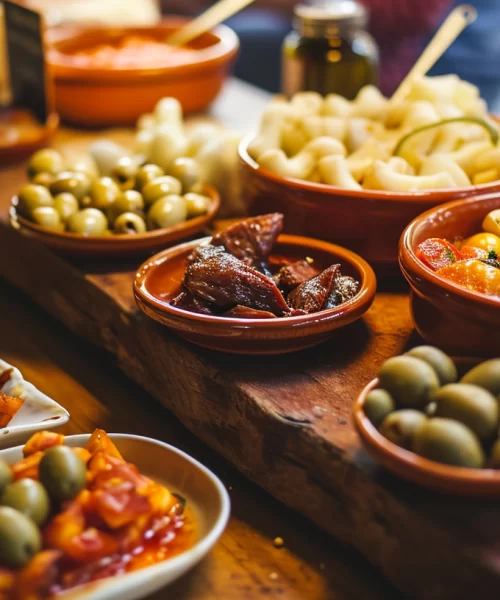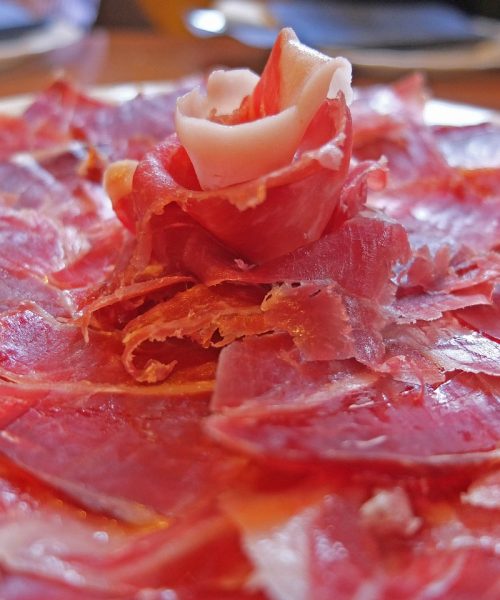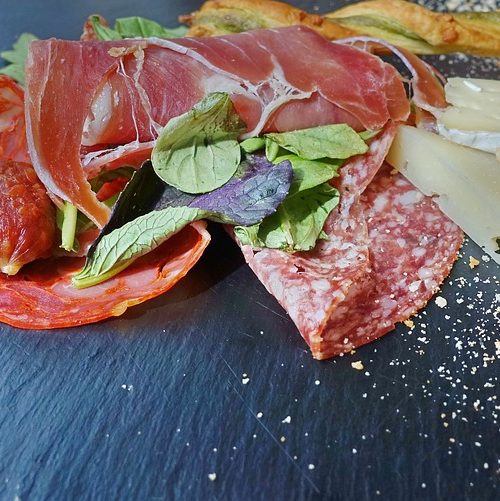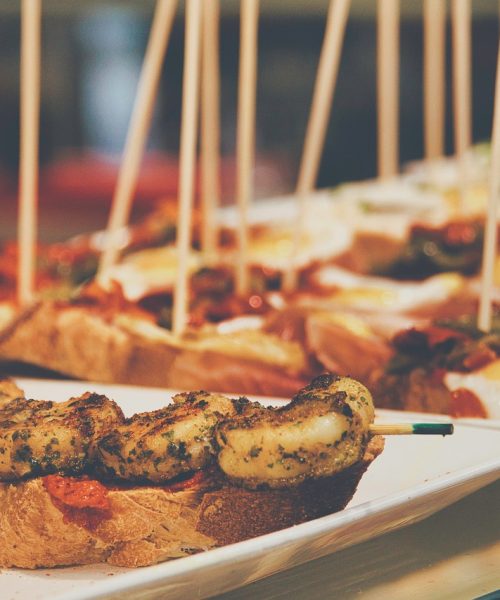5 Different Styles of Tapas
Having Tapas at a restaurant can be a fun and delicious experience for all the family. The options are endless, and there are many different styles of Tapas to choose from. Whether you prefer a traditional Spanish tapa, or a more modern style, there is something for everyone.
Patatas bravas
Whether you’re looking for a Spanish themed party, a light dinner, or just want to have some delicious food at home, Patatas Bravas is an easy and cheap way to serve tasty tapas. These potatoes are roasted and served with a delicious, spicy tomato sauce. You can use any type of herb or spice to make a delicious version of this Spanish favorite.
Patatas Bravas are a popular tapa in Spain. The dish is usually served as an appetizer, a side dish, or as a light dinner. You can serve Patatas Bravas with grilled fish, chicken, or seafood. You can even serve it with a green salad.
Patatas Bravas are typically served in tapas bars in servings of about a quarter kilo of potato. Traditionally, Patatas Bravas are served with a spicy tomato sauce and garlic aioli. The sauce is easy to make and tastes delicious. However, the sauce may be different at each bar.
For the best patatas bravas, you’ll want to make sure you use a good quality olive oil. Then, you can toss the potatoes in the oil to make them nice and crispy. You’ll want to keep them in the oil for about 10 minutes. The outside should be a nice golden brown.
Ensaladillas
Known as the national dish of Spain, ensaladillas for tapas are popular throughout the world. The salad is usually served with a glass of white wine. A popular tapas bar dish, it can be eaten at room temperature or chilled.
The dish has a potato base and is served with a variety of meats, such as ham, pork, or tuna. It can be eaten as a side dish or as an appetizer. It is often served with green olives and crisp green beans. It is delicious on its own, but it also makes a tasty main course.
The salad is typically served cold. It can be made in about 40 minutes. If you do not have time to prepare the salad, you can buy store-bought mayo and it will be fine. However, homemade mayo is much better. It is easy to make and will change the flavor of the salad.
Some ensaladillas include shrimp and hard boiled eggs. Other restaurants add other meats to the dish. In Spain, the dish is usually served with peas. This salad can be made with carrots, potatoes, and tuna.
In Russia, ensaladillas are typically served on New Year’s Eve. During the Spanish Civil War, the dish suffered many changes.
Picadillas
Whether you’re looking to cook up some Spanish tapas or want to serve up an easy meal for your family, the Spanish Picadillo is a delicious choice. Featuring ground beef and vegetables, this is an easy recipe to try, and it can be served in a variety of ways.
The Spanish Picadillo is a great dish to serve with rice, pasta, or a salad. Its earthy, spicy flavors pair well with a variety of ingredients. It can also be served as a main dish, accompanied by fried plantains or tortillas.
This recipe can be made with ground beef, pork, or turkey. You can also make it spicy with a little chili powder, cayenne pepper, or even a combination of both. The Picadillo recipe is simple to follow, and it makes plenty of leftovers for your family. It’s also a great dish to repurpose into new meals.
To make the Picadillo, start by browning the ground beef in a skillet. You can also substitute ground chicken or turkey for the ground beef. The ground beef can then be seasoned with salt and pepper. You can also add olives or raisins to the recipe. After you add the ground cumin, add the chopped red bell pepper.
Chorizo
Whether you are looking for a quick meal, or a dish for an upcoming dinner party, you’ll want to give chorizo tapas a try. They are easy to make, and taste great!
To start, you’ll need to cut the chorizo into small pieces. The slices should be about a half-inch thick. The chorizo should be cooked over medium heat. This will allow it to cook evenly, and you’ll end up with a firm sausage that doesn’t dry out too quickly.
While you’re cooking the sausage, you can add onions and garlic. Cook the onions until they are caramelized, and then turn the sausage over to brown both sides. You can also add bay leaves, which add a hint of Mediterranean flavor.
Once the chorizo is cooked, you can add the wine and stir to combine. If you have a little time, you can also add some honey. Honey will add a sweet flavor to the sauce, which will make it stickier. It’s also a good idea to add a little salt.
You can also serve the sausage with a creamy garlic dip. You can also add it to a rice dish or stew. The sauce will taste great with olives.
Jamon
Whether you’re in the mood for something light and refreshing, or a more decadent meal, Jamon Tapas is the perfect choice. The Spanish tradition of ham croquettes is easy to replicate at home, and makes for a delicious light lunch or dinner.
The secret to Jamon Tapas lies in the curing process. The traditional methods for curing ham have been replicated, and the result is an incredibly tasty product that’s available throughout the European Union.
Jamon is a meat product similar to prosciutto. It’s typically made from deboned meat, and is served in small portions. In some regions, it may be smoked.
Jamon is similar to Italian prosciutto, but has a slightly different texture and flavour. It can be bought in a number of countries, including the UK, France, Portugal, and Spain. It’s also available in some countries of the European Union, but import restrictions can raise its price.
In Spain, Jamon Iberico is a popular ham. It is produced from the back legs of Iberian pigs. The pigs are farm-raised, and are fed a grain-rich diet. They’re then cured for several months.
Unlike Italian prosciutto, Jamon Iberico has a distinct salty aroma and flavour. It’s a popular choice in Spanish tapas bars, and in many Spanish homes.
Pa amb tomaquet
Among the Spanish tapas, pa amb tomaquet is a classic recipe that was introduced during the early nineteenth century. It is a great snack and side dish, and is also a popular breakfast dish.
It is a simple dish, requiring only five ingredients: bread, tomato, olive oil, salt, and garlic. It can be made in minutes, and serves as a tasty snack or a base for tapas. You can even add other ingredients such as anchovies, olives, or ham to the bread.
The first written recipe for pa amb tomaquet was published in 1884. According to Catalan cooking historian Nestor Lujan, this dish was likely invented during the bumper tomato harvest of the nineteenth century.
Pa amb tomaquet is made with a simple, toasted bread that has been rubbed with a tomato pulp and olive oil. To make the tomato bread, you simply slice a large red tomato into two halves.
The bread is then rubbed with garlic and a little salt. Then, olive oil is drizzled over the bread. The bread is toasted in a toaster oven or broiler. Depending on the flavour of the food you are serving, the olive oil intensity can be adjusted.
Traditional Galician preparation
Authentic Galician cuisine is based on local products, such as seafood, blond cows, pork, wild mushrooms, nuts and forest honey. The cuisine is known for its quality and variety. In fact, some of the best beef in Spain is produced in Galicia.
One of the most famous dishes in Galicia is octopus. The octopus is boiled and cut into bite-sized pieces. The tentacles are then sprinkled with smoked paprika. The octopus is usually served with boiled potatoes.
Another traditional Galician dish is “Caldo Gallego”. Caldo gallego is a meat and vegetable stew that is traditionally made during the cold months of the year. This dish is served in traditional earthen bowls. Most Gallegos make the dish in one pot, while restaurant chefs prepare it in several pots. Some recipes add turnip greens, haricot beans or cabbage.
Another popular tapa in Galicia is chicharrones. Chicharrones are pressed pork meat. These are traditionally served at room temperature, but are recommended to be eaten with bread.
Crepes are another traditional dish in Galicia. They date back to Roman times. These can be savory or sweet. They are typically prepared in the hearths of old houses. These can be filled with chestnuts, whipped cream or chocolate. They are traditionally eaten during Carnaval in Galicia.





